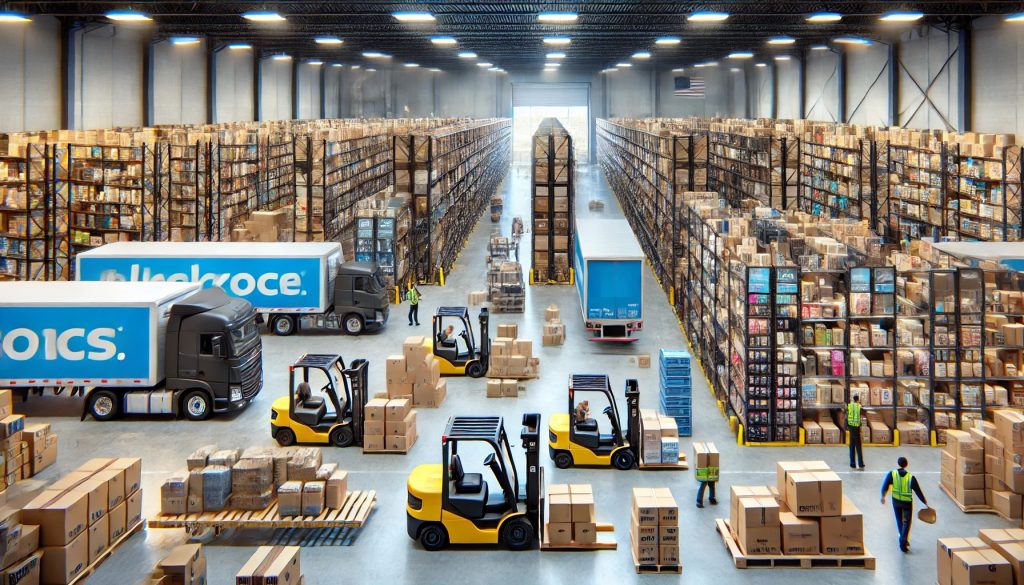
Overview of Retail Distribution Channels in the US
Retail distribution in the US market operates through several key channels. They each offer distinct advantages based on the business model and target audience. One of the primary methods is direct-to-consumer (D2C) distribution, where companies sell their products directly to customers without intermediaries. This model allows brands to maintain greater control over pricing, customer experience, and brand messaging. Many businesses have shifted toward D2C strategies. This is mostly due to the rise of e-commerce platforms. It helps build closer relationships with consumers and increases profitability by cutting out the middlemen.
Wholesalers, on the other hand, play a crucial role in distributing products to a wide network of retailers. In this model, manufacturers sell in bulk to wholesalers, who then distribute the products to smaller retailers. This method is effective for reaching a broad market quickly and reducing the logistical burden on manufacturers. However, retailers using this channel have less control over the end-customer experience. As a result, they may face competition from other brands within the same distribution network.
Third-party retailers, including large-scale stores like Walmart and online marketplaces like Amazon, also dominate retail distribution in the US market. These platforms offer massive reach and customer convenience. However, they often demand strict compliance with their rules and policies, limiting a brand’s flexibility. The balance between physical stores and e-commerce continues to evolve. While brick-and-mortar stores still play a significant role, especially for customers who value in-person shopping, e-commerce has seen explosive growth. The convenience of online shopping has shifted consumer behavior, making it an integral part of retail distribution strategies.
The mix of D2C, wholesalers, and third-party retailers provides diverse pathways for retail distribution in the US market. Companies must strategically choose the right channels to maximize reach while maintaining brand integrity.
Trends Shaping the US Retail Distribution Landscape
Emerging technologies like automation and AI are transforming retail distribution in the US by improving supply chain efficiency. Automation helps businesses streamline processes, such as warehouse management and order fulfillment, reducing human error and speeding operations. AI-powered systems are used to predict demand, manage inventory, and optimize logistics, helping retailers respond quickly to market changes. These innovations cut costs while improving the accuracy and reliability of deliveries, meeting customer expectations for fast, seamless service.
The rise of omnichannel retail is also reshaping distribution strategies, as consumers expect a unified shopping experience. Retailers must integrate their online and offline channels effectively to meet these growing expectations. Omnichannel strategies ensure that customers enjoy a consistent brand experience across mobile apps, websites, and stores. This shift has required retailers to invest in flexible distribution networks that support various touchpoints. Businesses are adopting advanced technologies and logistics models to synchronize inventory across channels, ensuring timely deliveries.
These trends are driving the evolution of retail distribution in the US market, requiring businesses to adapt. By leveraging automation and AI, and embracing omnichannel strategies, companies can stay competitive in a changing environment. This blend of technological advancement and integrated customer experiences is shaping retail’s future, setting new standards for speed and customer satisfaction.
Challenges
Retail distribution in the US market faces several challenges that can disrupt operations and impact profitability. One of the most common logistical hurdles is managing complex supply chains that span multiple regions or even continents. Coordinating the movement of goods across different transportation modes while maintaining efficiency requires precise planning and the ability to adapt to unforeseen delays. Additionally, regulatory challenges, such as tariffs, import restrictions, and compliance with safety standards, further complicate the process for businesses operating in multiple jurisdictions.
Economic factors also play a significant role in shaping the landscape of retail distribution in the US market. Supply chain disruptions, like those seen during the COVID-19 pandemic, have highlighted the vulnerability of global networks. These disruptions can lead to delayed shipments, inventory shortages, and higher costs, forcing retailers to adjust their distribution strategies. Labor shortages, particularly in warehouses and logistics sectors, further exacerbate these problems. With fewer workers available, retailers struggle to keep up with demand, causing delays and increased labor costs as companies offer higher wages to attract workers.
Transportation costs also present a significant challenge. Rising fuel prices and the complexity of last-mile delivery are driving up the overall cost of distribution. Businesses must find ways to absorb or pass on these costs without sacrificing customer satisfaction. Additionally, the growing demand for faster delivery times, driven by consumer expectations, puts even more pressure on retailers to streamline their operations while managing these escalating expenses. Together, these logistical, regulatory, and economic challenges make retail distribution in the US market a complex and ever-evolving endeavor that requires constant adaptation and strategic planning.
Strategies for Optimizing Retail Distribution
To optimize retail distribution in the US market, businesses can implement a variety of strategies focused on partnerships, inventory management, and technology. Strategic partnerships with third-party logistics (3PL) providers or fulfillment centers can help retailers expand their reach while reducing the burden of managing complex supply chains. These partnerships allow businesses to leverage existing infrastructure, helping them scale distribution efforts without the need for significant capital investment. By outsourcing certain aspects of logistics, retailers can focus on core competencies like product development and customer experience.
Efficient inventory management is also crucial for streamlining retail distribution in the US market. Implementing real-time tracking systems and demand forecasting tools can help businesses better manage stock levels, reducing the risk of overstocking or stockouts. Advanced inventory management solutions use data analytics to predict trends and adjust inventory in response to fluctuations in demand. This not only optimizes storage but also improves delivery times, as products are more readily available when needed. Effective management of warehouse operations and stock replenishment can significantly enhance both speed and cost-efficiency in product delivery.
Leveraging technology is another best practice for improving distribution efficiency. Automated systems for order processing, warehouse management, and delivery tracking streamline operations, ensuring faster processing and fewer errors. Additionally, route optimization software can reduce transportation costs by calculating the most efficient delivery routes, minimizing fuel expenses, and improving delivery times. Businesses that invest in such technologies can meet growing consumer expectations for fast, reliable shipping while keeping costs under control. By combining these strategies, companies can optimize their distribution networks and remain competitive in an increasingly demanding retail environment.
The Future of Retail Distribution in the US
The future of retail distribution in the US market will be shaped by evolving consumer behavior and rapid technological advancements. As customers increasingly demand faster and more convenient shopping experiences, businesses must adapt by enhancing their distribution networks. The rise of e-commerce and the expectation for same-day or next-day delivery will continue to push companies toward more efficient and flexible supply chain models. Technologies such as artificial intelligence, robotics, and advanced data analytics will play a significant role in meeting these demands by automating processes and optimizing logistics in real-time. These innovations will allow retailers to streamline operations, reduce errors, and meet customer expectations with greater speed and precision.
Sustainability is also becoming a critical factor in the future of retail distribution in the US market. With consumers becoming more eco-conscious, businesses are under increasing pressure to adopt greener practices throughout their supply chains. This shift is driving the growth of eco-friendly logistics solutions, such as electric vehicles for last-mile delivery, energy-efficient warehouses, and the use of recyclable or biodegradable packaging materials. Additionally, many companies are exploring ways to reduce carbon emissions by optimizing delivery routes and using renewable energy sources in their distribution centers. As sustainability becomes a priority for both consumers and regulators, retailers that embrace eco-friendly practices will likely gain a competitive edge.
Overall, the future of retail distribution in the US market will be defined by a combination of technological innovation and a growing emphasis on sustainability. Businesses that can leverage new technologies while minimizing their environmental impact will be well-positioned to meet the needs of tomorrow’s consumers. This shift not only aligns with consumer preferences but also helps companies remain competitive in an increasingly challenging market.
Conclusion
In conclusion, retail distribution in the US market is undergoing significant transformation due to shifting consumer behavior and technological advancements. Businesses must adapt by embracing automation, omnichannel strategies, and sustainable practices to stay competitive. The ability to streamline operations and offer seamless customer experiences will be crucial for long-term success. As technology continues to evolve, those that integrate eco-friendly logistics and cutting-edge solutions will lead the market. By staying agile and responsive to both innovation and customer expectations, companies can optimize their distribution networks and drive future growth.


